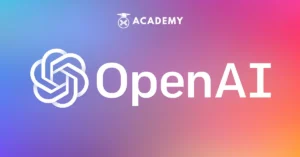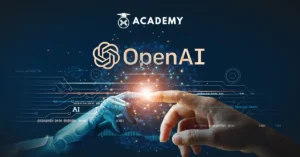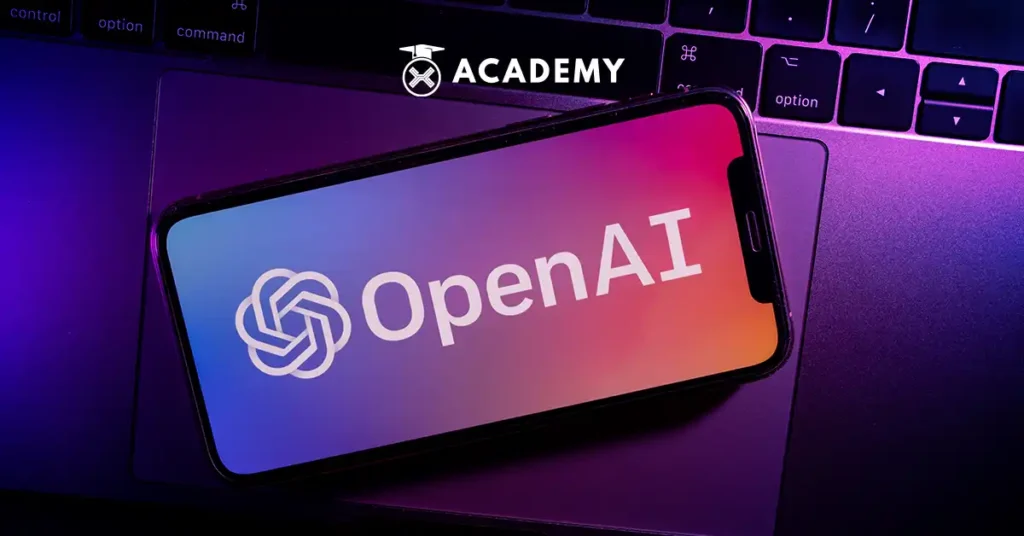Since ChatGPT was introduced in November 2022, OpenAI, as the brains behind the technology, has been the talk of the town on social media.
OpenAI is a non-profit research organization that focuses on the development and application of artificial intelligence to benefit life.
Now, check out the full review below to understand what OpenAI is, its history, its main functions, how it works, and its latest products.
What is OpenAI?
Quoting openai.com, founded in 2015, OpenAI is an artificial intelligence (AI) research and implementation laboratory based in San Francisco, United States.
OpenAI’s main goal is to ensure that general artificial intelligence (AGI), software with human-level intelligence, can benefit society.
OpenAI was founded by some leading figures in the technology industry, such as Elon Musk, Sam Altman, Greg Brockman, Ilya Sutskever, John Schulman, and Wojciech Zaremba.
In 2018, Elon Musk resigned from OpenAI’s board of directors due to potential conflicts of interest with his other companies, including Tesla and SpaceX.
The History of OpenAI
OpenAI’s history began in December 2015 when leading technology executives committed to provide $1,000,000,000, equivalent to IDR15,000,000,000,000, to support the development of artificial intelligence (AI) by OpenAI, as reported by the BBC.
The organization’s key backers include figures such as Elon Musk (CEO of Tesla Motors and SpaceX), Peter Thiel (co-founder of Paypal), India’s leading technology company Infosys, and Amazon Web Services.
In its initial founding, OpenAI stated its intention to research the positive impact of AI on humans. OpenAI was initially established as a non-profit organization to build AI software transparently and make its products open source so that the entire world could enjoy the benefits, as per a Washington Post report.
However, in 2019, OpenAI changed to a for-profit company with a customized structure to limit investors’ returns to a certain multiple of their investments.
The transition provides a snapshot of OpenAI’s evolution from its inception to the present reflecting their commitment to developing useful AI and the organization’s sustainability.
Main Functions of OpenAI
It is an artificial intelligence (AI) research laboratory with researchers and engineers working together to build advanced AI systems.
The establishment of OpenAI aims to ensure that the development of artificial intelligence is carried out safely, provides benefits, and is in line with human values.
Here are the main functions of OpenAI that you need to know, including:
1. Research and development in the field of artificial intelligence
The main function of OpenAI, among others, is related to research activities in artificial intelligence (AI) and the development of AI technology.
2. Focus on AI applications such as natural language processing, computer vision, and robotics
To date, OpenAI has focused on various AI applications, including natural language processing, computer vision, robotics, and reinforcement learning.
In addition, OpenAI is currently developing artificial intelligence tools and platforms designed to be accessible to researchers, developers, and businesses. Its existence is geared towards promoting transparency and security in developing AI systems.
OpenAI collaborates with policymakers, researchers, and other stakeholders to ensure that AI is developed in a way that is safe, ethical, and benefits society.
How OpenAI Works

Quoting cointelegraph.com, OpenAI code interpreter uses technology that utilizes artificial intelligence (AI) to understand and generate programming code.
It is built on machine learning principles, with an iterative training methodology that refines its capabilities over time. Explore how this artificial intelligence model works and its no-code interpretation prowess.
OpenAI’s code interpreter primarily uses the RLHF model, which first undergoes a pre-training phase on a large collection of publicly available text using various programming languages and code contexts.
This unsupervised learning phase allows the model to develop a general understanding of the language and code syntax, semantics, and conventions. Once the pre-training is complete, the model undergoes a second stage, customization.
The process uses smaller, carefully curated data sets and incorporates human feedback to align the model’s responses with human-like interpretations.
At this stage, the model’s output is compared, and rewards are given based on how accurately the output matches the desired response.
The model then uses these rewards to improve its future results, learning from each interaction to make better predictions over time.
It is important to explain that although a code interpreter can generate and understand code, it does not “understand” code like a human. It has no awareness or conceptual understanding of what it is doing.
Instead, it identifies patterns and structures in the data it has been trained on and uses that knowledge to generate or interpret code.
For example, if the model is given a piece of code to interpret, it does not understand the purpose or function of the code as a human would.
Instead, it analyzes the code’s patterns, syntax, and structure based on the large amount of programming data it has processed during training.
Then, the model produces output that reflects what it has learned, providing an interpretation of the code that resembles human understanding.
The codeless understanding of OpenAI’s code interpreter is its ability to take input in natural language and generate programming code accordingly. This feature makes the tool accessible to users without programming expertise, allowing them to harness the power of programming by simply stating their needs in plain English.
What Types of Tasks Can OpenAI Do?
The OpenAI code interpreter is a versatile tool capable of handling various tasks related to code interpretation and generation.
Here are some of the types of tasks that the OpenAI code interpreter can handle:
1. Code generation
The code interpreter can generate the corresponding programming code by describing natural language. This capability benefits those who may not have in-depth programming knowledge but need to implement certain functions or features.
2. Code review and optimization
This model can review existing code and suggest improvements, offering more efficient or simplified alternatives. This can be a useful tool for developers looking to optimize their code.
3. Bug Identification
The code interpreter can analyze pieces of code and identify potential bugs or errors. It can highlight specific parts of the code causing problems and often suggest fixing them.
4. Explaining the code
This model can take a piece of code as input and provide a natural language explanation of what the code does. This feature can be invaluable for learning new programming concepts, understanding complex code structures, or documenting code.
5. Code translation
Code translators can translate code from one programming language to another. For example, if you have a Python function that you want to replicate in JavaScript, this model can help with the translation.
6. Predicting Code Output
The model can predict the output when the code is executed by providing code snippets. That’s useful for understanding unfamiliar code’s functionality or debugging purposes.
7. Generating test scenarios
The model can also generate test scenarios for a particular function or feature. This can be useful in the software testing and quality assurance process.
What is the Impact of OpenAI on Business?
Companies can leverage any of OpenAI’s products to optimize their potential. ChatGPT is beneficial in reducing the time and budget required to provide services to customers.
With the application of Natural Language Processing (NLP) technology, OpenAI can create conversations automatically, allowing companies to reduce labor budgets on customer service.
The OpenAI platform can improve service responsiveness in responding to complaints and client feedback in real time. Additionally, the user experience will improve due to the provision of appropriate responses, making communication through chatbots more humanized.
OpenAI provides various benefits to companies, where its technology can understand natural language well understanding consumer queries without requiring lengthy training.
The platform can handle multiple tasks and respond accurately to multiple requests simultaneously. Companies can reduce the time and budget required to provide customer services with this approach.
Pros and Cons of OpenAI
As a result of human creativity, OpenAI technology has some advantages and disadvantages in helping individuals with the artificial intelligence products they have created.
Here are some of the pros and cons of OpenAI:
1. Pros of OpenAI
- Advanced AI Technology
OpenAI has been conducting leading-edge research in artificial intelligence, including developing Natural Language Processing (NLP), Reinforcement Learning, and computer vision technologies.
The results of this research are expected to drive the advancement of artificial intelligence technology in the future, providing various benefits to the business world and society.
- Creativity and Innovation
OpenAI supports opportunities for innovation and creativity in the realm of artificial intelligence. Creating an open-source AI platform, OpenAI allows individuals and organizations to develop new solutions and applications to meet various challenges.
- Overcoming Complex Challenges
Advances in artificial intelligence have proven capable of overcoming complex obstacles and providing more effective solutions than humans in recent years.
OpenAI continues to develop artificial intelligence capabilities to provide the best solutions to complex problems in the future.
- Education Improvement
OpenAI is committed to improving artificial intelligence while analyzing this technology’s ethical and social impacts. They are also dedicated to giving developers, scientists, and students worldwide access to the latest resources and information.
OpenAI plays a role in accelerating education and learning about artificial intelligence and preparing the younger generation to use this technology wisely.
2. Cons of OpenAI
- Limited Resources
OpenAI requires substantial resources to continue developing artificial intelligence technology and maintain its position as a leader in the industry. However, OpenAI is still limited in investment, availability of qualified labor, and infrastructure.
- Complexity of Improved Constraints
Some problems solved by artificial intelligence require a deep understanding of various aspects of the real world, such as social science, politics, and culture. In contrast, providing solutions that cover all these aspects is a challenge.
- Limited Machine Readability
Despite using Natural Language Processing (NLP) technology, the limited machine knowledge of human language is still a challenge that OpenAI must overcome.
- Procedural and Regulatory Issues
The massive growth in artificial intelligence can present complex issues regarding procedures and regulations, especially privacy and data security.
OpenAI needs to consider the impact of the technology they are developing and support the creation of regulations that can prevent the misuse of this technology.
- Competition
Intense competition in this industry encourages companies to compete in creating superior technology. OpenAI must maintain its position as a leader in the technology industry to stay relevant.
7 Leading Products of OpenAI

OpenAI has produced several AI products and tools designed to be easily accessible to researchers, developers, and businesses. Some of the prominent AI products that OpenAI has developed are as follows:
1. GPT-3
A language model capable of generating human-like text, it has been implemented in various applications, including the GPT-3 chatbot, content generation, and language translation.
2. GPT-4
GPT-4 is a large multimodal language model that can solve difficult problems with higher accuracy, thanks to its broader general knowledge and problem-solving capabilities.
3. Codex
An artificial intelligence platform that can write code in various programming languages, including Python, JavaScript, and Ruby.
4. DALL-E
DALL-E is an artificial intelligence system capable of generating images based on textual descriptions.
5. CLIP
An artificial intelligence system that can recognize and classify images based on natural language descriptions.
6. Whisper
This product is an internet-based Automatic Speech Recognition (ASR) technology developed using 680,000 hours of voice data.
7. RoboSumo
A robotics platform designed to develop and test autonomous robots.
7 Roles of OpenAI in Crypto Industry & Security
The potential for growth and innovation in the OpenAI and crypto sectors can be considered as significant. With the crypto market becoming more complex and sophisticated, OpenAI technology can make a meaningful contribution to the industry.
Here are the various roles of OpenAI in the crypto industry to know, including:
1. Trade Bot
Several artificial intelligence models and algorithms can be integrated into trading bots to make automated trading decisions based on market data and analysis.
2. Smart Contract Code Checking
Generative models such as GPT-3 released by OpenAI can generate smart contract codes, improving the quality and security of smart contract codes.
In addition, some models from OpenAI can be used to analyze smart contract code and predict potential bugs or security issues.
3. Blockchain Analysis
OpenAI models can be leveraged to analyze blockchain data, such as transaction volume and mining difficulty, to gain insight into the network’s overall health and identify potential vulnerabilities.
For example, these models can be trained to recognize patterns in blockchain data that may indicate potential attacks or other security threats.
In addition, some models from OpenAI can be used to generate simulated blockchain network environments that are useful for security testing and analysis.
4. Natural Language Processing
Natural Language Processing (NLP) models can be applied to analyze news articles, social media posts, and other text data to identify trends related to specific crypto assets.
This is also useful for understanding market sentiment and helping traders make smart decisions. Additionally, these NLP models can be used to create virtual assistants that help users understand and manage their crypto investments.
Such virtual assistants can answer questions about specific coins, present real-time market data, and support the buying and selling decision process.
5. Fraud Detection
Such applications can detect fraudulent activities on crypto exchanges and wallets, such as phishing, hacking, and money laundering.
Furthermore, the selected models can be applied in establishing risk management systems, helping crypto investors and traders assess and mitigate the risks associated with investing in crypto markets.
6. Crypto Wallet Management
The OpenAI model can be leveraged to create crypto wallet management tools, which assist users in tracking their crypto holdings and managing multiple wallets through a single interface.
7. Compliance
OpenAI can develop artificial intelligence models to monitor crypto transactions and ensure compliance with regulations and laws, including anti-money laundering (AML) and Know Your Customer (KYC) requirements.
Conclusion
In conclusion, OpenAI is making a great contribution to the crypto industry through artificial intelligence technology, which can improve efficiency, security, and compliance. Ultimately, OpenAI’s AI technology has unlocked the potential to shape a more sophisticated and secure future in the crypto ecosystem.
For additional information, you can also read other interesting articles about the world of AI technology, ranging from Chat GPT, Humata AI, to Perplexity AI in a collection of interesting articles on INDODAX Academy.
To increase your understanding of blockchain technology and crypto assets, you are advised to read the latest articles in the INDODAX Academy crypto dictionary collection.
INDODAX Academy presents a variety of materials covering basic concepts to more in-depth aspects related to blockchain technology.
By reading the articles on INDODAX Academy, you can gain a deeper understanding of this technology, including its applications, and get the latest information about the crypto world.
Invest in Crypto Assets with Staking (EARN) Feature
Now, you understand what OpenAI is, its history, its main functions, how it works, and its most popular products.
Furthermore, if you are interested in investing in crypto assets, it is advisable to choose a safe and reliable Indonesian crypto exchange, INDODAX.
Please note that on INDODAX, there is currently a feature called crypto staking or crypto earn. The crypto assets locked through the INDODAX Earn feature will provide rewards like the interest earned from savings.
The INDODAX Earn crypto staking feature can be accessed easily, anytime and anywhere, through the Mobile App or desktop on the INDODAX website on the INDODAX Earn crypto staking page.
What are you waiting for? Start investing in crypto assets with the crypto staking feature with INDODAX!








